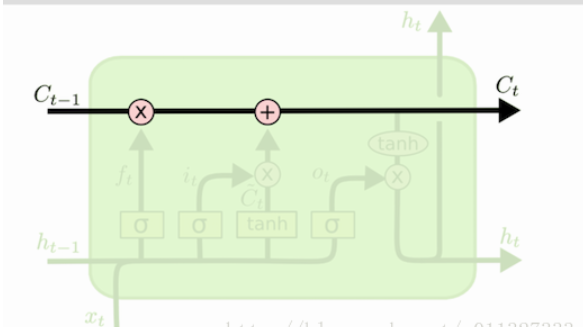基本简介
LSTM_learn
使用Keras进行时间序列预测回归问题的LSTM实现
数据
数据来自互联网,这些数据用于预测航空公司的人数,我们使用LSTM网络来解决这个问题
关于此处模型构建,只对keras部分代码做重点的介绍
模型构建与编译
def build_model():
# input_dim是输入的train_x的最后一个维度,train_x的维度为(n_samples, time_steps, input_dim)
model = Sequential()
#部分注释是对于老版本的kreas,支持,2.2.2不支持
# model.add(LSTM(input_dim=1, output_dim=50, return_sequences=True))
#2.2.2 keras
model.add(LSTM(input_shape=(None, 1), units=100, return_sequences=False))
#①
# model.add(LSTM(units=100, return_sequences=False))
# model.add(Dense(output_dim=1))
model.add(Dense(units=1))
model.add(Activation('linear'))
model.compile(loss='mse', optimizer='rmsprop')
return model①上面代码是建立了一个序列模型,采用的lstm,这里面关于参数这里要重点说明,return_sequences=True与False,比如说在我们设置。model.add(LSTM(input_shape=(None, 1), units=100, return_sequences=False))中就不需要执行 model.add(LSTM(units=100, return_sequences=False)),但是在我们执行model.add(LSTM(input_shape=(None, 1), units=100, return_sequences=True))时后面是必须要接, model.add(LSTM(units=100, return_sequences=False))的
具体原因及扩展原因如下:
Understand the Difference Between Return Sequences and Return States for LSTMs in Keras
Kears LSTM API 中给出的两个参数描述
return_sequences:默认 False。在输出序列中,返回单个 hidden state值还是返回全部time step 的 hidden state值。 False 返回单个, true 返回全部。
return_state:默认 False。是否返回除输出之外的最后一个状态。
区别 cell state 和 hidden state
LSTM 的网络结构中,直接根据当前 input 数据,得到的输出称为 hidden state。
还有一种数据是不仅仅依赖于当前输入数据,而是一种伴随整个网络过程中用来记忆,遗忘,选择并最终影响 hidden state 结果的东西,称为 cell state。 cell state 就是实现 long short memory 的关键。
如图所示, C 表示的就是 cell state。h 就是hidden state。(选的图不太好,h的颜色比较浅)。整个绿色的矩形方框就是一个 cell。
cell state 是不输出的,它仅对输出 hidden state 产生影响。
通常情况,我们不需要访问 cell state,除非想设计复杂的网络结构时。例如在设计 encoder-decoder 模型时,我们可能需要对 cell state 的初始值进行设定。
keras 中设置两种参数的讨论
1.return_sequences=False && return_state=False
h = LSTM(X)Keras API 中,return_sequences和return_state默认就是false。此时只会返回一个hidden state 值。如果input 数据包含多个时间步,则这个hidden state 是最后一个时间步的结果
2.return_sequences=True && return_state=False
LSTM(1, return_sequences=True)输出的hidden state 包含全部时间步的结果。
3.return_sequences=False && return_state=True
lstm1, state_h, state_c = LSTM(1, return_state=True)lstm1 和 state_h 结果都是 hidden state。在这种参数设定下,它们俩的值相同。都是最后一个时间步的 hidden state。 state_c 是最后一个时间步 cell state结果。
为什么要保留两个值一样的参数? 马上看配置4就会明白
为了便于说明问题,我们给配置3和配置4一个模拟的结果,程序结果参考reference文献。
[array([[ 0.10951342]], dtype=float32), # lstm1
array([[ 0.10951342]], dtype=float32), # state_h
array([[ 0.24143776]], dtype=float32)] # state_c
3.return_sequences=True && return_state=True
lstm1, state_h, state_c = LSTM(1, return_sequences=True, return_state=True)此时,我们既要输出全部时间步的 hidden state ,又要输出 cell state。
lstm1 存放的就是全部时间步的 hidden state。
state_h 存放的是最后一个时间步的 hidden state
state_c 存放的是最后一个时间步的 cell state
一个输出例子,假设我们输入的时间步 time step=3
[array([[[-0.02145359],
[-0.0540871 ],
[-0.09228823]]], dtype=float32),
array([[-0.09228823]], dtype=float32),
array([[-0.19803026]], dtype=float32)]可以看到state_h 的值和lstm1的最后一个时间步的值相同。
state_c 则表示最后一个时间步的 cell state
Reference
https://machinelearningmastery.com/return-sequences-and-return-states-for-lstms-in-keras/
完整代码:
import pandas as pd
import numpy as np
import matplotlib.pyplot as plt
from sklearn.preprocessing import MinMaxScaler
from keras.models import Sequential
from keras.layers import LSTM, Dense, Activationdef load_data(file_name, sequence_length=10, split=0.8):
df = pd.read_csv(file_name, sep=',', usecols=[1])
data_all = np.array(df).astype(float)
scaler = MinMaxScaler()
data_all = scaler.fit_transform(data_all)
data = []
print("len(data_all)={}".format(len(data_all)))
for i in range(len(data_all) - sequence_length - 1):
print("i={}, (i + sequence_length + 1)={}".format(i, i + sequence_length + 1))
data.append(data_all[i: i + sequence_length + 1])
reshaped_data = np.array(data).astype('float64')
np.random.shuffle(reshaped_data)#(133,11,1)
# 对x进行统一归一化,而y则不归一化
#行全部取,11列中除了最后一列不取(133,10,1)
x = reshaped_data[:, :-1]
#行全部取,11列中只取最后一列(133,1)
y = reshaped_data[:, -1]
#分割数
split_boundary = int(reshaped_data.shape[0] * split)
train_x = x[: split_boundary]
test_x = x[split_boundary:]
train_y = y[: split_boundary]
test_y = y[split_boundary:]
print("train_x={}, train_y={}, test_x={}, test_y={}".format(train_x.shape, train_y.shape, test_x.shape, test_y.shape,))
return train_x, train_y, test_x, test_y, scaler
def build_model():
# input_dim是输入的train_x的最后一个维度,train_x的维度为(n_samples, time_steps, input_dim)
model = Sequential()
# model.add(LSTM(input_dim=1, output_dim=50, return_sequences=True))
#2.2.2 keras
model.add(LSTM(input_shape=(None, 1), units=100, return_sequences=False))
print(model.layers)
# model.add(LSTM(units=100, return_sequences=False))
# model.add(Dense(output_dim=1))
model.add(Dense(units=1))
model.add(Activation('linear'))
model.compile(loss='mse', optimizer='rmsprop')
return model
def train_model(train_x, train_y, test_x, test_y):
model = build_model()
try:
# model.fit(train_x, train_y, batch_size=512, nb_epoch=30, validation_split=0.1)
model.fit(train_x, train_y, batch_size=512, epochs=30, validation_split=0.1)
predict = model.predict(test_x)
predict = np.reshape(predict, (predict.size, ))
except KeyboardInterrupt:
print(predict)
print(test_y)
print("predict={},test_y={}".format(predict,test_y))
# print(test_y)
try:
fig = plt.figure(1)
plt.plot(predict, 'r:')
plt.plot(test_y, 'g-')
plt.legend(['predict', 'true'])
except Exception as e:
print(e)
return predict, test_y
if __name__ == '__main__':
train_x, train_y, test_x, test_y, scaler = load_data('international-airline-passengers.csv')
train_x = np.reshape(train_x, (train_x.shape[0], train_x.shape[1], 1))
test_x = np.reshape(test_x, (test_x.shape[0], test_x.shape[1], 1))
print("train_x.shape={},test_x.shape={}".format(train_x.shape,test_x.shape))
predict_y, test_y = train_model(train_x, train_y, test_x, test_y)
#返回原来的对应的预测数值
predict_y = scaler.inverse_transform([[i] for i in predict_y])
test_y = scaler.inverse_transform(test_y)
fig2 = plt.figure(2)
plt.plot(predict_y, 'g:')
plt.plot(test_y, 'r-')
plt.show()参考文献:
lstm中文网:https://keras.io/layers/recurrent/#lstm
https://blog.csdn.net/yyb19951015/article/details/79740869
https://blog.csdn.net/a819825294/article/details/54376781
https://blog.csdn.net/mebiuw/article/details/52705731
https://blog.csdn.net/hhtnan/article/details/80403146

